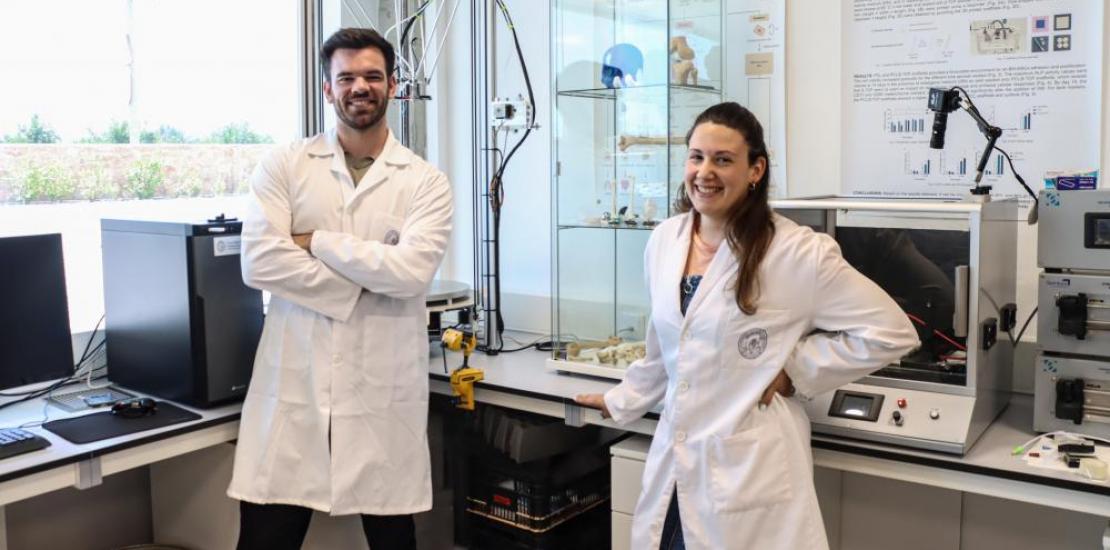UCAM Develops New Types of Bone Implants to Reinforce Damaged Bones
Researchers from the Universidad Católica are taking part in one of the leading trauma conferences in the world to present two new biomaterials for bone regeneration.
Two cutting-edge research projects developed by the research groups Molecular Recognition and Encapsulation (REM) and Tissue Regeneration and Repair: Biomaterials and Tissue Engineering (GRRT), led respectively by José Antonio Gabaldón and Luis Meseguer, submitted their results to the 24th European Federation of National Associations of Orthopedics and Traumatology Congress. This international congress was held in Vienna (Austria) and brought together specialists in this area from all over the world.
Led by Luis Meseguer Olmo, the research has focused on the manufacture of bone implants for bone recovery and repair. These new materials induce the differentiation of stem cells into adult bone cells, regenerating bone from the implant more rapidly.
The GRRT researcher Iván López, who won the award for best poster of the congress in the category Implants, Biomaterials & Registry Study, has developed a polymer, through 3D printing, that rapidly regenerates bone. To achieve this, the plastic that composes the polymer has been reinforced with calcium phosphate. This substance is what activates the differentiation of stem cells used to accelerate patient recovery.
On the other hand, REM group scientist Ana Belén Hernández has developed a ceramic material that reabsorbs cells more slowly, increasing the long-lasting effect inside the bone. This research also used calcium phosphate in order to enrich the implant and differentiate the cells faster.
Both of these studies have been conducted in an integrated manner in the trials and continue to show promising results in people with any type of bone injury.
Improved patient care
Nowadays, patients who have suffered serious injuries are treated with grafting techniques, filling the gaps created in the broken bones with other bones from areas such as the hip. With the development of these synthetic implants, patients will be able to regenerate their own tissues less aggressively in the near future, without affecting their mobility or quality of life.




